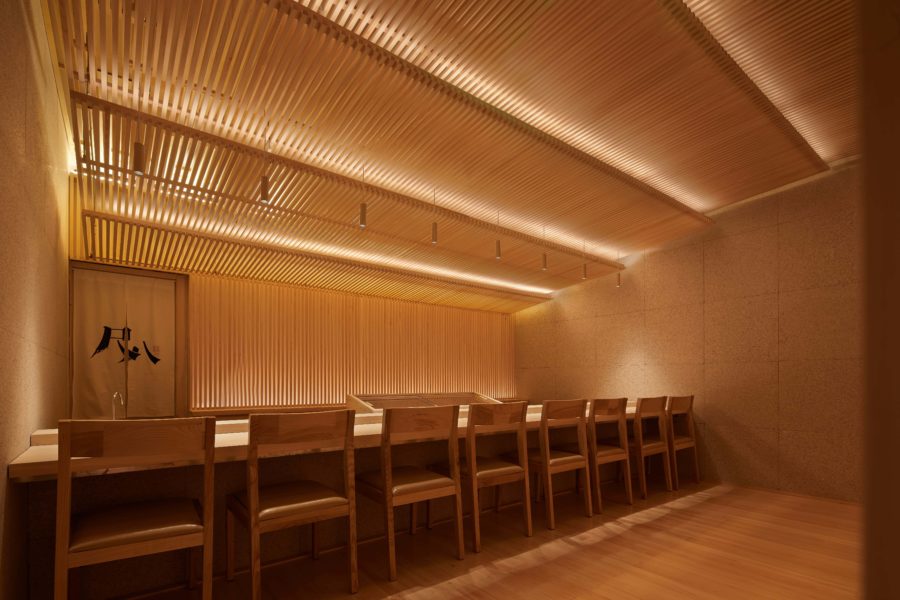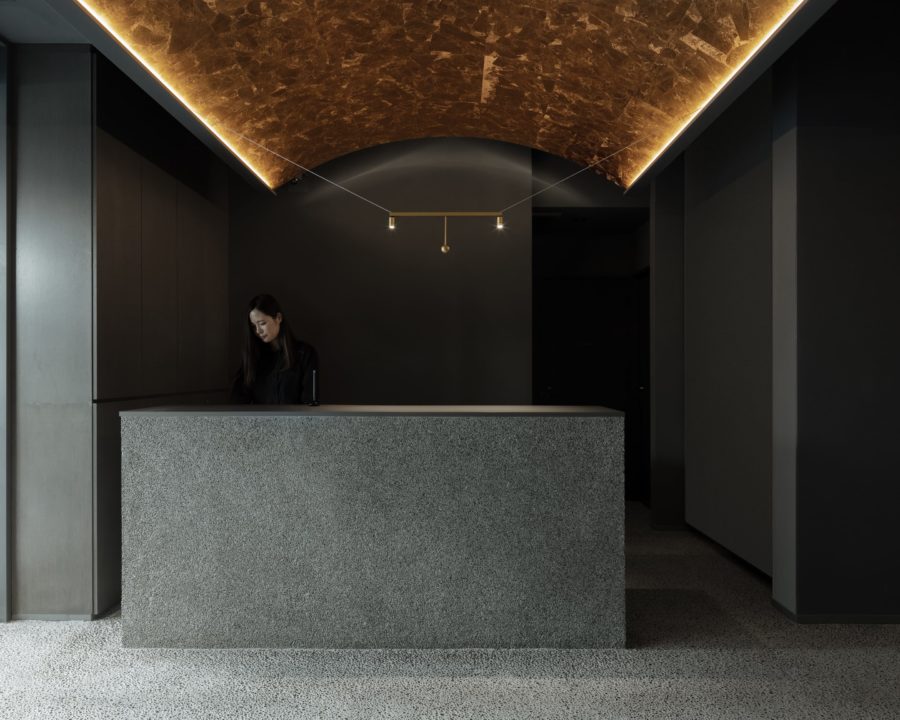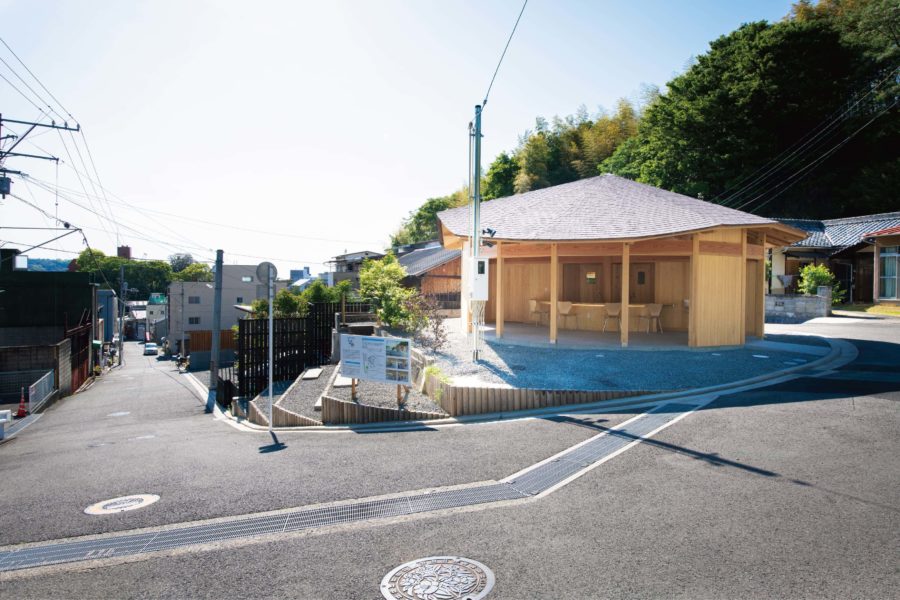敷地は1970年代前半にひな壇状に造成された阪神都市圏のベッドタウンにあり、南斜面の眼下にパノラマが広がる地域は、南に開放的、北に閉鎖的な表情の家が連なっている。
住み手家族はともに教師の夫婦と小さな子ども2人で、向こう10年は規則正しい生活が続きそうであった。毎日「おはよう」「いってきます」を言って家を出ていきたい、という要望とともに、いずれは(そして今でも時折)家族間でも距離をとりたい時があるだろうと考え、内部の「みんな / ひとり」を外部の「おもて / うら」の様子に重ね合わせていった。
東は六甲山、西は大阪湾までが見渡せ、空に放り出されたような景色が広がる「おもて」だが、そこが住まいとなれば日常的な背景である。そこに変化を持たせるために、視線の断面的な動きに合わせて、近景の庭木や遠景の季節の移り変わりをさまざまに捉える窓とした。
外部では、石積みの擁壁や既存の木々が落ち着きのある庭をつくり出している。浴室からは庭のモミジを、ロフトからは街路樹のサクラを望める開口を設け、それらが結果的に外形の凹凸を生み出している。いびつな外形が外部にも動きのある空間をつくり、古い既存擁壁の南階段へとつながっている。(小林一行、樫村芙実)
A house in which family life is superimposed on the exterior front and back
This project’s site is located in a bed town in the Hanshin urban area, which was developed in the early 1970s in a daisy-shaped pattern, with a panoramic view of the area below on the southern slope, and a series of houses with open south and closed expression to the north.
The family of residents, a couple of teachers, and their two small children were likely to lead a regular life for the next ten years. However, they wanted to say ‘good morning’ and ‘I’m going’ every day when they left the house, and also thought that eventually (and still occasionally) there would be times when they would want to distance themselves from the rest of the family, so the internal ‘everyone/one’ was superimposed on the external ‘front/back.
Front” is a place where you can see as far as Mount Rokko to the east and Osaka Bay to the west, and where the scenery seems to be thrown up into the sky, but when it becomes your home, it is your everyday background. To add variety to this, the windows are designed to capture the changing seasons in the distance and the garden trees in the immediate landscape in accordance with the cross-sectional movement of the eye.
Outside, the masonry retaining wall and existing trees create a tranquil garden. Openings are provided from the bathroom to view the maple trees in the garden and from the loft to view the cherry trees on the street, which in turn create an irregularity in the external form. The irregular external form creates a space of movement outside, leading to the southern staircase of the old existing retaining wall. (Ikko Kobayashi, Fumi Kashimura)
【ひな壇の家】
所在地:兵庫県宝塚市
用途:戸建住宅
クライアント:個人
竣工:2017年
設計:テレインアーキテクツ / TERRAIN architects
担当:小林一行、樫村芙実
構造設計:鈴木芳典、五十嵐日奈子 / TECTONICA
施工:三王テック
協力:木童
撮影:笹倉洋平 / 笹の倉舎
工事種別:新築
構造:木造
規模:地上2階
敷地面積:263.74m²
建築面積:62.59m²
延床面積:113.61m²
設計期間:2015.09-2017.01
施工期間:2017.01-2017.08
【Terraced Land House】
Location: Takarazuka, Hyogo, Japan
Principal use: Private house
Client: Individual
Completion: 2017
Architects: TERRAIN architects
Design team: Ikko Kobayashi, Fumi Kashimura
Structure engineer: Yoshinori Suzuki, Hinako Igarashi / TECTONICA
Contractor: Sanno Housing
Cooperation: Kodo
Photographs: Yohei Sasakura / Sasano Kurasha
Construction type: New Building
Main structure: Wood
Building scale: 2 Stories
Site area: 263.74m²
Building area: 62.59m²
Total floor area: 113.61m²
Design term: 2015.09-2017.01
Construction term: 2017.01-2017.08








